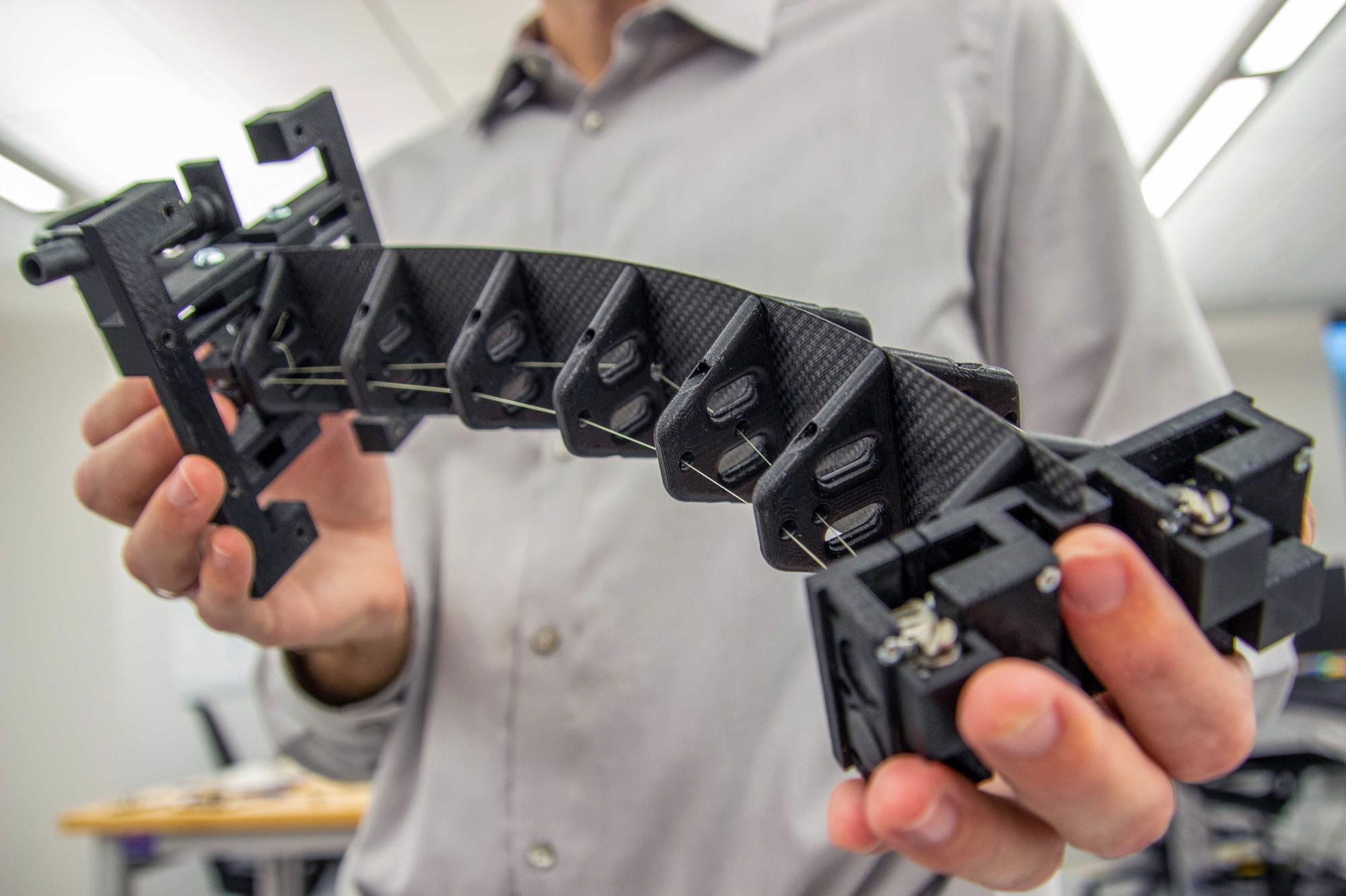The Louisiana Space Consortium has awarded a grant to a team of researchers at Louisiana State University’s Mechanical Engineering department to design and build a soft robot for future space exploration.
 Image Credit: Louisiana State University (2022) LSU ME Professor Gilbert Designs’ Soft’ Robot for NASA [online] Available at: https://www.lsu.edu/eng/news/2022/03/gilbertsoftrobot.php
Image Credit: Louisiana State University (2022) LSU ME Professor Gilbert Designs’ Soft’ Robot for NASA [online] Available at: https://www.lsu.edu/eng/news/2022/03/gilbertsoftrobot.php
In collaboration with the NASA Langley Research Center, the LSU team is exploring the possibility of using soft materials in the construction of space bound structures.
One of the big problems in getting a robot to space is it must be lightweight, and we think that the particular technology we’re investigating can be made very lightweight.
Prof. Hunter Gilbert, Louisiana State University
What Are Soft Robots?
In the design of modern robots, engineers use hard materials such as metals, ceramics and plastics to fabricate controllable systems. These systems are controlled through rigid electro-mechanical actuators and motors.
Soft robotic systems move away from hard materials in an effort to develop systems that function more like the biological systems found in nature. Cephalopods, such as octopi, for example, display intricate manipulation skills without needing skeletons. Vertebrates, such as humans, store energy in their muscles and bones.
Engineers are inspired by these biological systems when designing soft robots. Soft robots made from soft materials have the added advantage of improving safety when working in close proximity to humans.
Using Soft Robots in Space Exploration
With the constraints imposed by size and weight, NASA engineers are striving to build lightweight, soft and flexible robots for space exploration.
Missions to asteroids and planets within the Solar System need to account for extremes in temperature, gravity and radiation. One challenge for Mars rovers, for example, is to avoid getting stuck in loose-gravel terrains. In that regard, soft robots that mimic the side movements of snakes have been explored.
Soft robots made from flexible materials such as elastomers and polymers allow them to accomplish tasks impossible for rigid robots. Robots used in space exploration must be:
- Versatile in size and shape: Soft robots adapt to a variety of surfaces and spaces.
- Able to move in any orientation: Some soft-bodied animals have been shown to move using the same strategy independent of the environment, whether it be underwater, vertically or upside down. Soft robots are “gravity independent” and able to operate in any environment.
- Intrinsically safe: Soft robots are fabricated from soft materials which minimize the risks of injury to humans or damage from collisions.
The LSU team’s work supports NASA’s Space Technology Mission Directorate, which is tasked with developing transformative technologies for future space missions.
The LSU team is led by Assistant Professor Hunter Gilbert in the department of Mechanical Engineering. It works on robotics systems for on-orbit servicing, assembly and manufacturing.
Genevieve Palardy, also Assistant Professor in Mechanical Engineering at LSU, is an expert in composite materials. She suggested to Gilbert that they use carbon fiber to build their soft robot.
Carbon fiber-reinforced polymers are lightweight and their properties, such as bending rigidity, are tailorable according to fiber orientation. This allows [us] to create components that are bendable in specific directions while being more rigid in others.
Prof. Genevieve Palardy, Louisiana State University
Critically, soft robots do not have sealing surfaces or joints where dirt or water could enter, making them suitable for use on surfaces like Mars’.
A traditional robot has a lot of external joints that require seals to keep dirt and dust out. If you have a robot that bends, there are fewer places where these unwanted environmental contaminants can get in.
Prof. Hunter Gilbert, Louisiana State University
There are also many advantages in using soft robots in fields other than space exploration, including medicine, safety inspection and maintenance.
There are definitely also safety advantages in having a soft robot. A large rigid robot could knock someone out and possibly kill them, which has happened in factories. Soft robots tend to be safer for use around people.
Prof. Hunter Gilbert, Louisiana State University
References and Further Reading
Ng, C., et al., (2021) Untethered Soft Robots for Future Planetary Explorations? Advanced Intelligent Systems [online] Available at: https://onlinelibrary.wiley.com/doi/full/10.1002/aisy.202100106
Trimmer, B., et al., (2013) Soft Robots in Space: A Perspective for Soft Robotics Acta Futura [online] 6 69-79 Available at: https://www.researchgate.net/publication/255709006_Soft_Robots_in_Space_A_Perspective_for_Soft_Robotics
Louisiana State University (2022) LSU ME Professor Gilbert Designs’ Soft’ Robot for NASA [online] Available at: https://www.lsu.edu/eng/news/2022/03/gilbertsoftrobot.php
Disclaimer: The views expressed here are those of the author expressed in their private capacity and do not necessarily represent the views of AZoM.com Limited T/A AZoNetwork the owner and operator of this website. This disclaimer forms part of the Terms and conditions of use of this website.